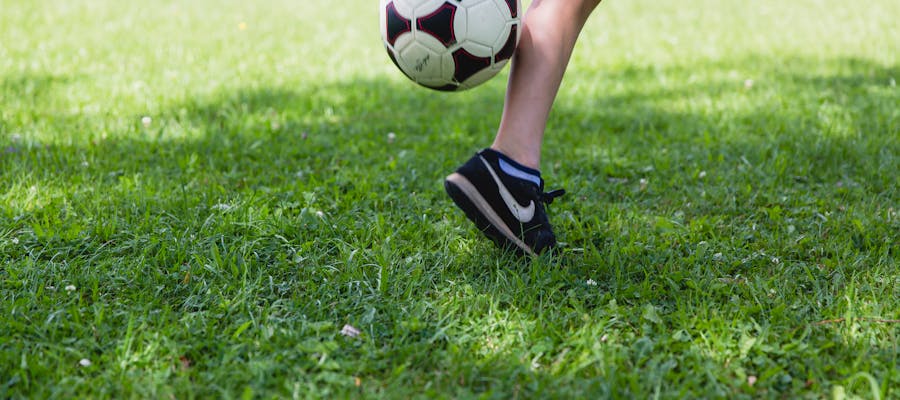In recent years, the installation of artificial grass in educational institutions has gained significant traction. As schools strive to create safer and more sustainable environments for their students, artificial turf presents itself as a compelling alternative to traditional natural grass. This shift towards synthetic grass is driven by a multitude of factors, ranging from cost-effectiveness to environmental sustainability. In this blog post, we’ll explore the myriad reasons why schools should consider installing artificial grass on their premises.
Safety First
One of the primary reasons for schools to opt for artificial grass is safety. Unlike natural grass, artificial turf offers a consistent and even surface that reduces the risk of slips, trips, and falls. This is particularly crucial in playgrounds and sports fields where children engage in various physical activities. Additionally, artificial grass eliminates the need for harmful pesticides and fertilizers, making the environment safer for students and staff alike.
Durability and Low Maintenance
Natural grass requires regular upkeep such as mowing, watering, and fertilizing to maintain its appearance. In contrast, artificial turf is incredibly durable and requires minimal maintenance. Schools can save valuable time and resources by eliminating the need for constant upkeep, allowing staff to focus on more pressing matters. Furthermore, artificial grass remains lush and green year-round, providing a visually appealing landscape regardless of the weather conditions.
Cost-Effectiveness
While the initial investment in artificial grass may seem significant, it proves to be cost-effective in the long run. Synthetic turf eliminates the need for costly maintenance equipment, water consumption, and labor associated with natural grass. Schools can allocate these saved funds towards other essential resources, such as educational programs and extracurricular activities, ultimately enhancing the overall student experience.
Water Conservation
With growing concerns about water scarcity and environmental sustainability, artificial grass emerges as a viable solution for schools looking to conserve water. Unlike natural grass, which requires substantial amounts of water to maintain its lush appearance, synthetic turf does not need regular watering. By installing artificial grass, schools can significantly reduce their water consumption and contribute to conservation efforts in their communities.
Accessibility for All
Another significant advantage of artificial grass is its accessibility for individuals with disabilities. Unlike natural grass, which can become uneven and challenging to navigate, synthetic turf provides a smooth and stable surface that is wheelchair-friendly. This inclusivity ensures that all students, regardless of their physical abilities, can safely and comfortably enjoy outdoor spaces within the school premises.
Versatility in Design
Artificial grass offers schools a high degree of flexibility in design and customization. Whether it’s creating vibrant playgrounds, sports fields, or outdoor learning spaces, synthetic turf can be tailored to meet the unique needs and preferences of each educational institution. Additionally, schools can incorporate colorful markings and logos directly onto the turf, enhancing school spirit and pride.
Year-Round Usability
Unlike natural grass, which may become muddy and unusable during inclement weather, artificial turf remains functional year-round. Whether it’s rain or shine, students can continue to engage in outdoor activities without worrying about damaging the grass or creating muddy conditions. This ensures that outdoor spaces remain accessible and enjoyable regardless of the weather conditions.
Environmental Sustainability
While the production of artificial grass involves the use of synthetic materials, its environmental impact is relatively low compared to natural grass. Synthetic turf eliminates the need for harmful pesticides, herbicides, and fertilizers, which can leach into the soil and waterways, posing risks to the environment and human health. Additionally, artificial grass reduces carbon emissions associated with lawn maintenance equipment such as lawnmowers and trimmers.
Educational Opportunities
Installing artificial grass can also present unique educational opportunities for students. Teachers can incorporate lessons on sustainability, ecology, and environmental conservation by discussing the benefits of synthetic turf compared to natural grass. Additionally, students can participate in gardening and landscaping projects involving artificial grass, fostering a greater appreciation for green spaces and the environment.
Enhanced Community Engagement
Lastly, the installation of artificial grass can serve as a catalyst for enhanced community engagement and involvement. Schools can host outdoor events, fundraisers, and sports competitions on their synthetic turf fields, bringing together students, parents, and community members. These shared experiences help foster a sense of belonging and pride within the community while promoting physical activity and social interaction.
Conclusion
The installation of artificial grass in schools offers a myriad of benefits ranging from safety and durability to environmental sustainability and educational opportunities. By embracing synthetic turf, educational institutions can create safer, more accessible, and visually appealing outdoor spaces that enhance the overall learning environment for students. Moreover, the adoption of artificial grass aligns with broader efforts towards sustainability and conservation, demonstrating a commitment to responsible stewardship of resources. As schools continue to prioritize the well-being and success of their students, artificial grass emerges as a practical and innovative solution for creating vibrant and sustainable educational environments.
